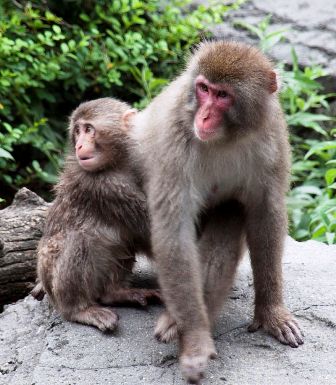Why Do We Smile?
Ecclesiastes 3:4
“A time to weep, and a time to laugh; a time to mourn, and a time to dance;”
Did you know it’s practically impossible to laugh without smiling at the same time? Try it sometime. Oh, you can make laughing sounds without smiling, but you can’t laugh for real. Well, if you’re anything like me, you just might laugh out loud when you hear what evolutionists are now telling us about why babies smile and laugh.
 According to evolutionists at Kyoto University, babies smile not because they are amused or because they are trying to communicate with their parents. Babies smile for the same reason that monkeys smile – “to facilitate the development of cheek muscles, enabling humans, chimpanzees, and Japanese monkeys to produce smiles, laughs, and grimaces.” They add, “Spontaneous smiles don’t express feelings of pleasure in chimpanzees and Japanese monkeys; rather, the smiles are more similar to submissive signals and grimaces rather than smiles.”
According to evolutionists at Kyoto University, babies smile not because they are amused or because they are trying to communicate with their parents. Babies smile for the same reason that monkeys smile – “to facilitate the development of cheek muscles, enabling humans, chimpanzees, and Japanese monkeys to produce smiles, laughs, and grimaces.” They add, “Spontaneous smiles don’t express feelings of pleasure in chimpanzees and Japanese monkeys; rather, the smiles are more similar to submissive signals and grimaces rather than smiles.”
According to study author Masaki Tomonaga, “We can infer that the origin of smiles goes back at least 30 million years, when old world monkeys and our direct ancestors diverged.”
Really now! Do evolutionists honestly expect us to believe this? There’s nothing funny about evolutionary nonsense like this. The reason we smile – even when we’re babies – is because God created human beings as emotional creatures capable of expressing an incredibly wide range of feelings. When’s the last time you thanked God for such a wonderful gift?
Today’s “Creation Moment” is one of almost 300 you’ll find in “Letting God Create Your Day, Volume 8” – the biggest collection of scripts we’ve ever published.
Prayer:
Heavenly Father, I know there is a time to weep, a time to laugh, a time to mourn and a time to dance. But loving Your Son for His great sacrifice on my behalf is something I can do all the time! In Jesus’ Name. Amen.
Notes:
“Smiling baby monkeys and the roots of laughter,” ScienceDaily, 8/4/16. Fumito Kawakami, Masaki Tomonaga, Juri Suzuki. The first smile: spontaneous smiles in newborn Japanese macaques (Macaca fuscata). Primates, 2016; DOI: 10.1007/s10329-016-0558-7. Photo: Japanese macaques. (CC BY-SA 3.0)